- Arbitration
- Banking & Finance
- Capital Markets
- Commercial
- Competition
- Construction & Infrastructure
- Corporate / Mergers & Acquisitions
- Corporate Services
- Corporate Structuring
- Digital & Data
- Dispute Resolution
- Employment & Incentives
- Family Business & Private Wealth
- Innovation, Patents & Industrial Property (3IP)
- Insurance
Find a Lawyer
Book an appointment with us, or search the directory to find the right lawyer for you directly through the app.
Find out more
Level Up: Unlocking Financial Potential In The Middle East
Welcome to this edition of Law Update, where we focus on the ever-evolving landscape of financial services regulation across the region. As the financial markets in the region continue to grow and diversify, this issue provides timely insights into the key regulatory developments shaping banking, investment, insolvency, and emerging technologies.


2025 is set to be a game-changer for the MENA region, with legal and regulatory shifts from 2024 continuing to reshape its economic landscape. Saudi Arabia, the UAE, Egypt, Iraq, Qatar, and Bahrain are all implementing groundbreaking reforms in sustainable financing, investment laws, labor regulations, and dispute resolution. As the region positions itself for deeper global integration, businesses must adapt to a rapidly evolving legal environment.
Our Eyes on 2025 publication provides essential insights and practical guidance on the key legal updates shaping the year ahead—equipping you with the knowledge to stay ahead in this dynamic market.
The leading law firm in the Middle East & North Africa region.
A complete spectrum of legal services across jurisdictions in the Middle East & North Africa.
-
Practices
- All Practices
- Banking & Finance
- Capital Markets
- Commercial
- Competition
- Construction & Infrastructure
- Corporate / Mergers & Acquisitions
- Corporate Services
- Corporate Structuring
-
Sectors
-
Country Groups
-
Client Solutions
Today's news and tomorrow's trends from around the region.
17 offices across the Middle East & North Africa.
Our Services
 Back
Back
-
Practices
- All Practices
- Banking & Finance
- Capital Markets
- Commercial
- Competition
- Construction & Infrastructure
- Corporate / Mergers & Acquisitions
- Corporate Services
- Corporate Structuring
- Digital & Data
- Dispute Resolution
- Employment & Incentives
- Family Business & Private Wealth
- Innovation, Patents & Industrial Property (3IP)
- Insurance
- Intellectual Property
- Legislative Drafting
- Private Client Services
- Private Equity
- Private Notary
- Projects
- Real Estate
- Regulatory
- Tax
- Turnaround, Restructuring & Insolvency
- White Collar Crime & Investigations
-
Sectors
-
Country Groups
-
Client Solutions
- Law Firm
- /
- Insights
- /
- Law Update
- /
- October 2013
- /
- Instructions for verifying the validity of Trademarks
Instructions for verifying the validity of Trademarks
Ala’a Mohammad Al Bataineh - Senior Associate - Intellectual Property
October 2013
Under the new instructions, No 6 of 2012 (‘the Instructions’), the Organisation has established the ‘Unit for Fighting Counterfeiting, Investigation and Reporting’ (‘the Unit’). This is a specialised unit whose purpose is to follow up complaints received from the Internal Control Directorate, which is a directorate inside the Organisation that deals with complaints received from the owners of affected trademarks.
Article 3 of the Instructions details the mechanism by which the Unit is to verify the product holding the trademark. The Unit is to receive the product from the Internal Control Directorate or affected trademark owner, with the following attached:
a) If the product entered Jordan through its borders:
- The serial number of the Customs declaration.
- The date of the Customs declaration.
- Import invoice.
b) If the product was already in the market:
- The name and address of the shop or the importer who has counterfeited the products.
- The quantity of the counterfeited products.
The Unit will then photograph the product using high quality cameras and specialised scanners, and send the images to the company who owns the trademark. The trademark owner can then investigate whether the product is original or counterfeit.
If the trademark owner is not satisfied with the photographs the Unit will send a sample of the product, thought the trademark owner will have to cover the delivery costs of this.
Once the trademark owner verifies the products they must inform the Unit in writing as to whether the product is indeed counterfeit or original.
If it is confirmed that the product is counterfeit, then under article 30(c) of the Law of the Organisation No. 22 for 2000, the Unit can do the following:
- If the counterfeit product has entered Jordan through its borders, the Unit in collaboration with the Jordan Customs Department and the importer shall re-export the product.
- If the forged product was created in Jordan, then it shall be destroyed.
Furthermore, article 4 of the Instructions provide a mechanism to protect trademarks. The trademark owner and the Organisation are to reach an agreement detailing the following:
- A mechanism for verifying trademarks
- A method for corresponding with any parent company should a counterfeit product be found.
- Providing support to the owner of the trademark through training employees or providing equipment such as specialised scanning machines that can ease the procedures for verifying the trademark.
- The annual fee to be paid by the trademark owner to protect the trademark. This is to be no less than JOD 20,000 for each trademark. The amount shall be determined based on the size of the company’s work, the amount of its sales, the trademark’s fame and its extensiveness, and the ability of the company to protect its trademarks. This fee is to be paid to the Organisation.
Whilst the Unit is new and remains largely untested, it is hoped that it will continue the strengthening of Jordan’s commitment and ability to protect trademarks.
Stay updated
To learn more about our services and get the latest legal insights from across the Middle East and North Africa region, click on the link below.


